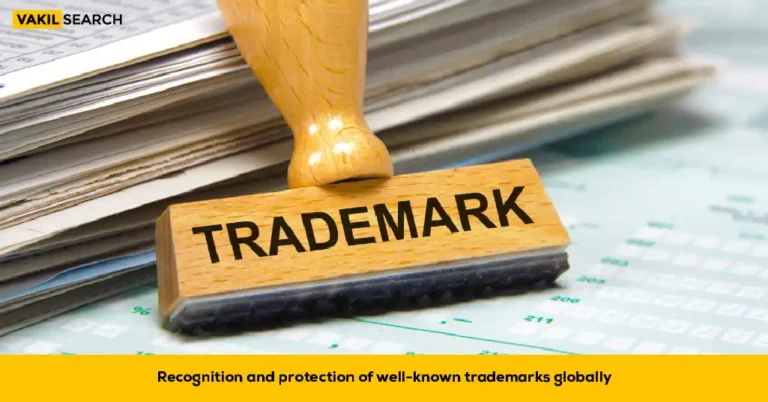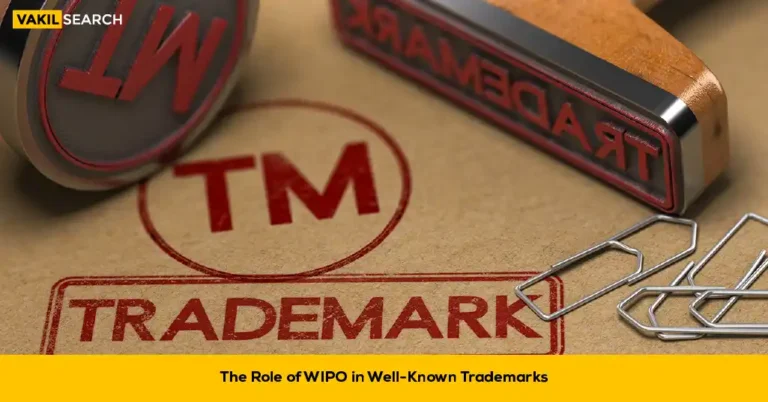Learn how to trademark the distinctive visual elements of your website in India. Our guide covers the types of eligible elements, the filing process, and enforcement of trademark rights.
Overview
In today’s digital age, websites are crucial in establishing and promoting businesses, organizations, and brands. With millions of websites vying for attention, differentiating and protecting unique visual elements has become increasingly important. Just as companies protect their names and logos through trademarks, the appearance of a website can also be safeguarded through trademark law.
By understanding the fundamentals of trademark law and the specific considerations related to website appearance, website owners and designers can take proactive steps to safeguard their digital identity. In this article, we will discuss the types of website elements that can be trademarked and trademark enforcement rights for website appearance.
What’s a Trademark?
A trademark is typically a word, design, or phrase used to identify the source of a product or service. For instance, a design trademark can take the form of a logo, while a phrase trademark can be a memorable tagline.
To illustrate, the McDonald’s corporation possesses various types of trademarks. They have name trademarks, such as their company name (McDonald’s) and product names like Big Mac and Filet-o-Fish. They also hold stylised versions of their name, like the recognisable golden arches ‘M.’ Additionally, they own phrase trademarks encompassing taglines like ‘I’m Lovin’ it,’ ‘Made for you,’ and ‘Give a little love.’ Furthermore, their design trademarks include iconic characters like Ronald McDonald, their recent anthropomorphic happy meal mascot, and the familiar yellow smile line.
What’s the Purpose of a Trademark?
Trademarks play a crucial role in ensuring brand consistency and facilitating efficient communication. When you encounter a can bearing the trademarked Coca-Cola logo, you can expect the taste to be consistent across all cans displaying the same logo. Similarly, when you visit a Home Depot store, you can anticipate a uniform shopping experience comparable to other Home Depot locations. This swift and effective communication of source and quality is especially significant in today’s economy. For example, someone purchasing a specific type of Pantene shampoo in Florida can confidently assume they will receive the same Pantene product whether they purchase it in Oregon or Texas.
Introduction to Trademarking Website Appearance
Trademarking the appearance of a website is an important step businesses can take to protect their online presence. A website’s appearance includes its
- Design elements
- Layout
- Graphics
- Logos
- Other visual elements that distinguish it from other websites.
Trademark protection can help businesses prevent others from using similar visual elements that could confuse consumers. Trademarks have long been used to protect names, logos, and slogans associated with products and services. However, the concept of trademarking website appearance has emerged as a means to secure the visual identity of a website and prevent others from imitating or using similar designs that could confuse consumers.
By obtaining a trademark for the appearance of their websites, owners can establish exclusive rights to their distinctive design elements, such as
- Colour schemes
- Logos
- Fonts
- Layouts and other visual features.
Understanding the Types of Website Elements that can be Trademarked
To trademark the appearance of a website, the website must have distinctive visual elements that consumers can identify.
These elements can include the website’s
- Name
- Logo
- Layout
- Colour scheme
- Graphics
- Other design elements that distinguish it from other websites.
The website’s domain name and URL can also be trademarked if unique and distinguishable from other websites. However, generic or descriptive terms cannot be trademarked as other businesses commonly use them.
Benefits and Limitations of Trademarking Website Appearance
| Benefits of Trademarking Website Appearance | Limitations of Trademarking Website Appearance |
| 1. Establishes Exclusive Rights: Trademarking the appearance of a website provides the owner with exclusive rights to distinctive visual elements. | 1. Functionality Limitations: Trademark protection for website appearance may not extend to purely functional elements. |
| 2. Brand Recognition: A trademarked website appearance enhances brand recognition and reinforces the website’s unique identity. | 2. Difficulty in Enforcing: Enforcing website appearance trademarks can be challenging, particularly in the digital realm, where websites can be easily replicated or modified. |
| 3. Competitive Edge: Trademarking the appearance of a website provides a competitive edge by preventing competitors from imitating or copying the distinctive visual elements that set a website apart. | 3. Evolving Designs: Websites often undergo design updates and modifications. It is important to regularly update and maintain the trademark to ensure it aligns with the current appearance of the website. |
Why is it Important to Trademark Your Website?
Trademarks are valuable assets that help establish
- Brand recognition
- Reputation
- Trust.
By trademarking the appearance of your website, you prevent others from imitating your design and confusing customers about the origin of your products or services. It protects your intellectual property. It also ensures that customers receive a consistent brand experience across all channels.
Trademarking your website also gives you legal grounds to take action against copycats who infringe on your intellectual property. This can include
- Sending cease and desist letters
- Filing lawsuits
- Seeking damages for lost revenue and reputation.
Eligibility for Trademark Protection of Website Appearance
The website’s appearance must be distinctive and non-functional to be eligible for trademark protection. The appearance must also be used in commerce. It means that it is used to promote or sell goods or services.
The website’s appearance must not be functional. It means that it must not serve a functional purpose beyond its visual appeal. For example, a button on a website that performs a specific function cannot be trademarked, but the design of the button can be trademarked if it is distinctive and non-functional.
How Long Have Trademarks Been in Use?
The use of trademarks has been prevalent for thousands of years, with ancient Roman and Egyptian artisans commonly marking their goods with names or symbols to establish their origins. In mediaeval England, bakers were mandated to imprint distinctive marks on their breads as a measure against fraudulent practices. Likewise, ale makers had to display alestakes outside their establishments, enabling local authorities to locate their businesses and ensure compliance with safety regulations and the law. Similar trademark laws emerged worldwide, but the first comprehensive modern trademark law was not established until the enactment of the 1857 French Manufacture and Goods Mark Act. In the United States, the trademark system has undergone several iterations, ultimately operating under the Lanham Act since 1946.
Filing for Trademark Protection for Website Appearance
If a business wants to protect the way its website looks with a trademark, they need to check if this is the first time anyone else has trademarked similar visuals. They can do this online or with a lawyer. After the search, they can apply with the Indian Trademark Office. The application should describe the trademarked visuals and show how they are used on the website. It should also say what goods or services the website promotes or sells.
Enforcing Trademark Rights for Website Appearance
Protecting a business’s brand and reputation is important. To do this, a business can have legal rights to prevent others from using similar-looking elements on their website that might confuse people.
If a business thinks someone is breaking these rights, they can act. They might send a letter telling the person to stop using the same visuals. If the person doesn’t listen, the business might go to court to ask for money or for the person to stop.
Before doing this, the business should think about how strong their legal rights are and how much harm the other person is doing. The business can also try to find and stop the person without going to court.
It’s important for businesses to protect their brand and reputation by ensuring they can only use their visuals on their website.
How Do I Own a Trademark?
By utilising a trademark with your products or services, you can acquire certain rights, known as ‘common law’ trademark rights. However, it is important to note that these rights are limited and susceptible to vulnerabilities. For instance, a company operating under a specific name for two decades without registering it as a trademark could potentially lose their rights to that name if someone else registers a legal trademark for a similar name with corresponding goods and services.
A trademark consists of two components: the trademark itself and the goods or services it is associated with. Registering a trademark, such as UNICORN PRINCESS for lipstick, grants exclusive rights within the country for that specific trademark in relation to lipstick products. Furthermore, the protection provided by trademark registration extends to related goods or services. This means that others will be prohibited from using UNICORN PRINCESS for goods typically offered by companies that sell lipstick, such as face powder, mascara, or bronzer.
However, it’s important to understand that if someone intends to register UNICORN PRINCESS as a trademark for completely different goods or services, such as a restaurant or children’s toys, your existing trademark registration would not impact their usage. In such cases, it would be unlikely for anyone to assume that the same company is involved in both lipstick production and children’s toy manufacturing under the same name.
It can be disheartening for individuals or businesses who have been using their name, logo, or tagline for an extended period to discover that they do not legally own their brand’s most valuable assets. Registering a trademark provides the best and most secure method to protect your business and its critical elements.
Conclusion
Trademarking the look of a website is a way for businesses to protect their online presence. It stops others from copying the website’s look, which could confuse customers. It also gives businesses the right to take legal action against anyone who copies their website’s appearance.
To trademark a website’s look, businesses need to ensure that the design is unique and doesn’t have practical use. They should also search to ensure no one else is already using the design and file an application with the Indian Trademark Office. Businesses can protect their brand and online presence by trademarking a website’s appearance.
Vakilsearch can assist businesses with trademarking the appearance of their website. Vakilsearch conducts a comprehensive search to ensure the visual elements still need to be used. We can guide businesses through the trademark application process. Contact us today.
FAQ
1 .When is it proper to use the federal registration symbol (the letter R enclosed within a circle)A. The federal registration symbol, represented by the letter ‘R’ within a circle, can only be used once a mark is officially registered with the U.S. Patent and Trademark Office. It is important to note that the registration symbol cannot be used prior to the mark’s official registration, even if an application is still pending. The federal registration symbol should only be employed on goods or services that are specifically covered by the federal trademark registration. |
2 . Are there federal regulations governing the use of the designations ‘TM’ or ‘SM’ with trademarks?A .The usage of the symbols ‘TM’ or ‘SM’ (representing trademark and service mark, respectively) may be subject to regulations imposed by local, state, or foreign laws. It is essential to consult the laws applicable in the relevant jurisdiction. Typically, these designations are employed to signify that a party asserts rights in a mark, often before obtaining a federal registration. |
3 . What are ‘common law’ trademark rights?A. Obtaining federal registration is not a prerequisite for establishing rights in a trademark. Common law rights originate from the actual usage of a mark. In general, the party that is the first to use a mark in commerce or file an intent to use application with the Patent and Trademark Office holds the primary right to use the mark and seek registration. |
Also, Read:


![Trademark Basics in the U.S [A Comprehensive Guide for Businesses]](https://vakilsearch.com/blog/wp-content/uploads/2023/06/Trademark-the-Appearance-of-Website.jpg)







